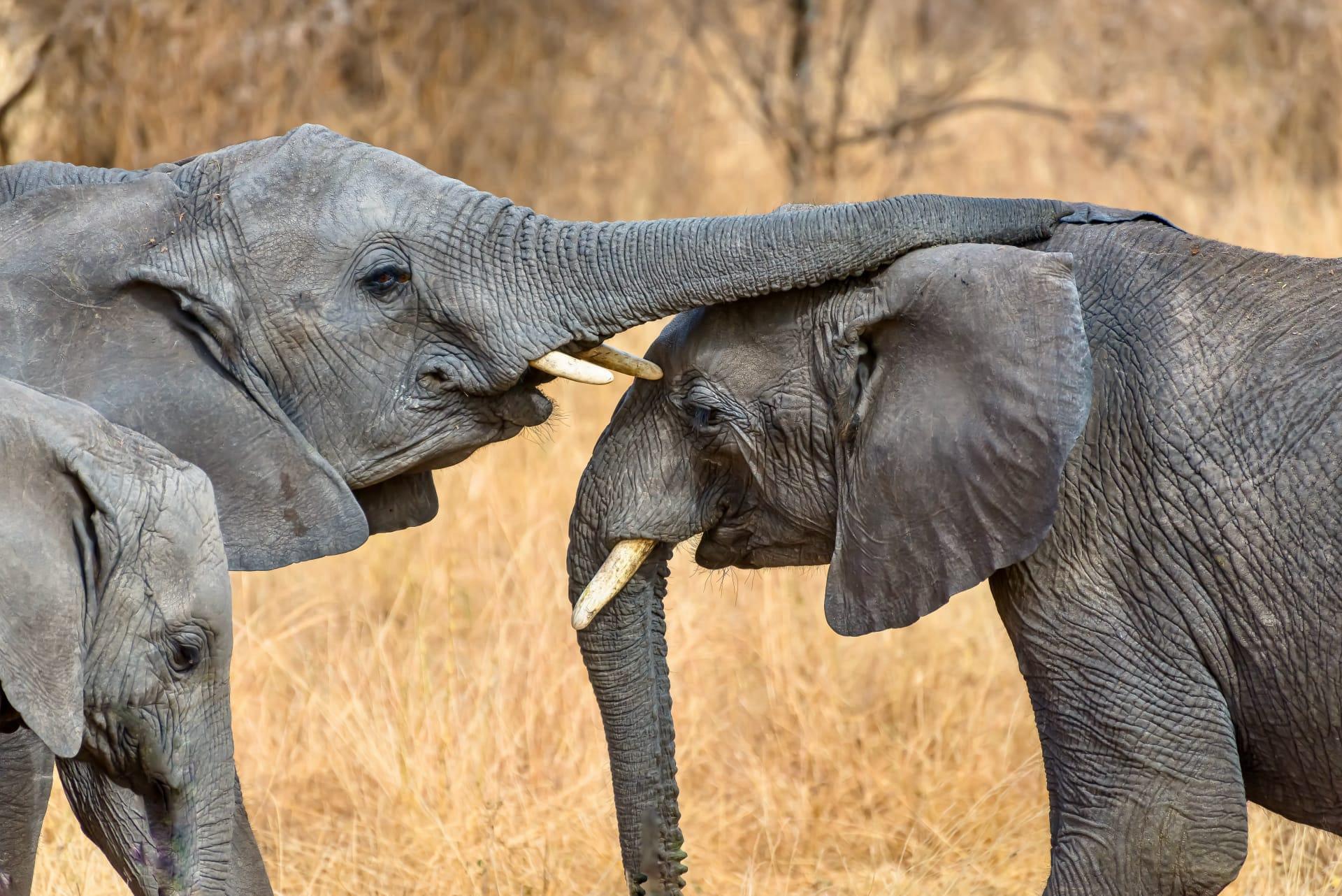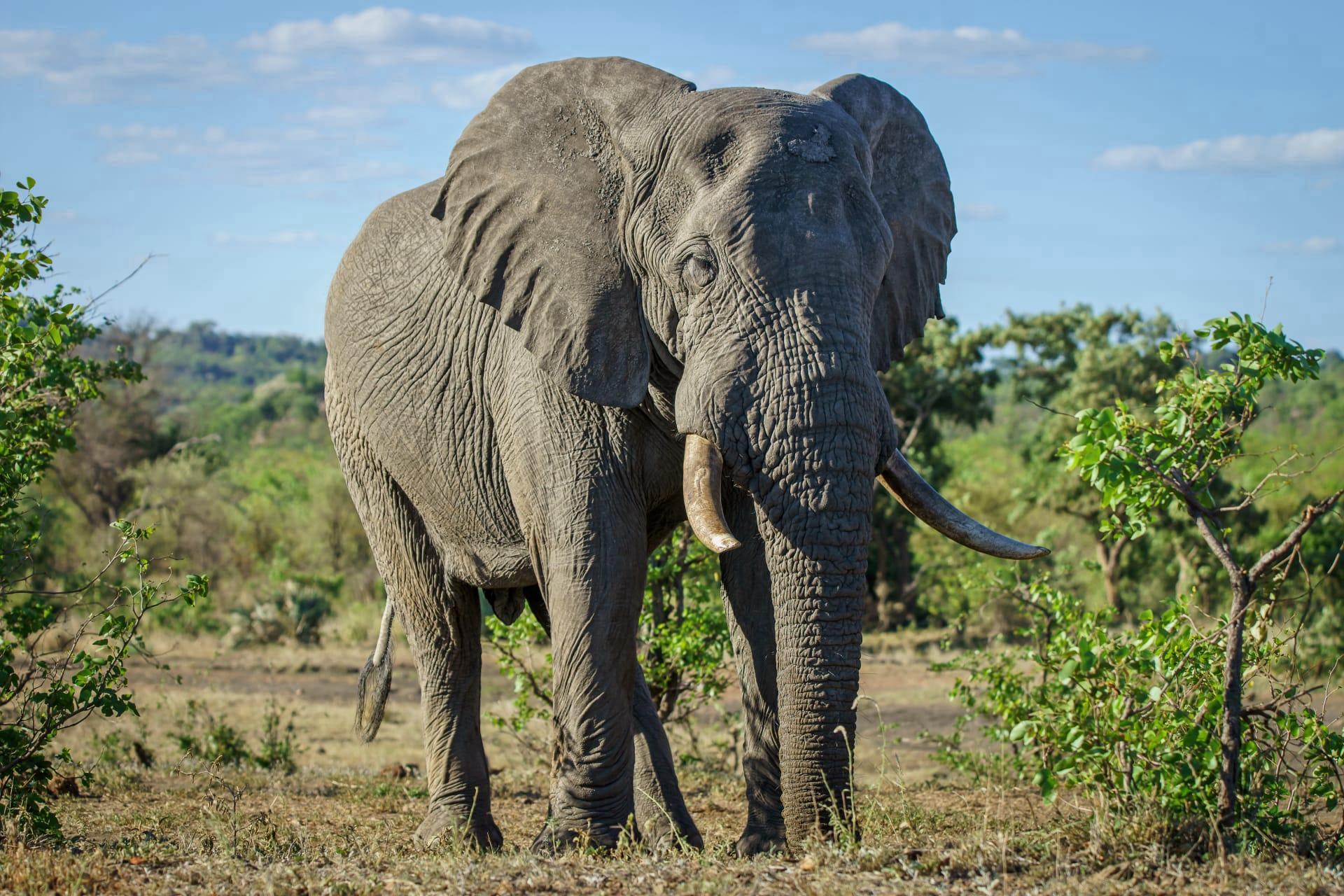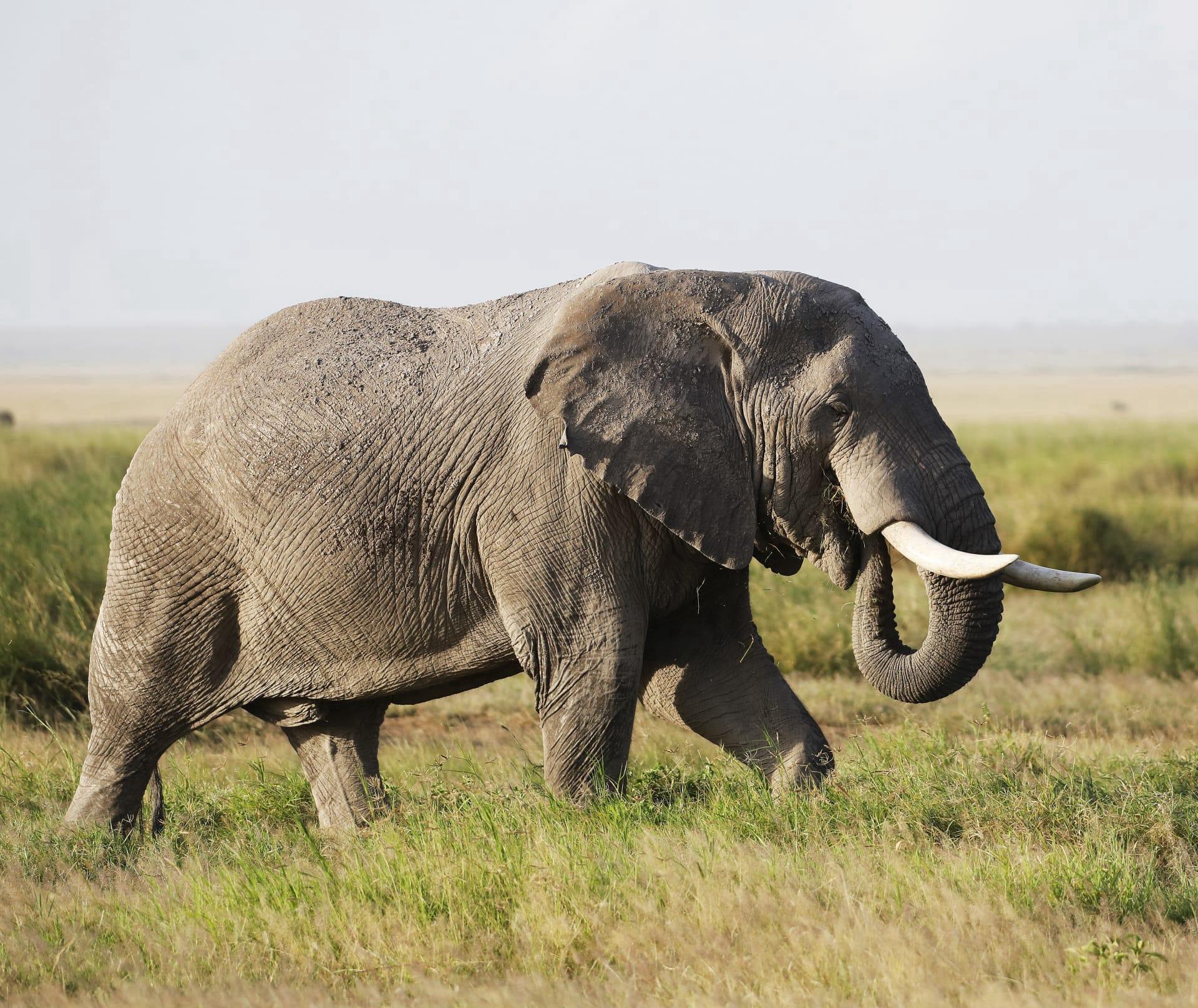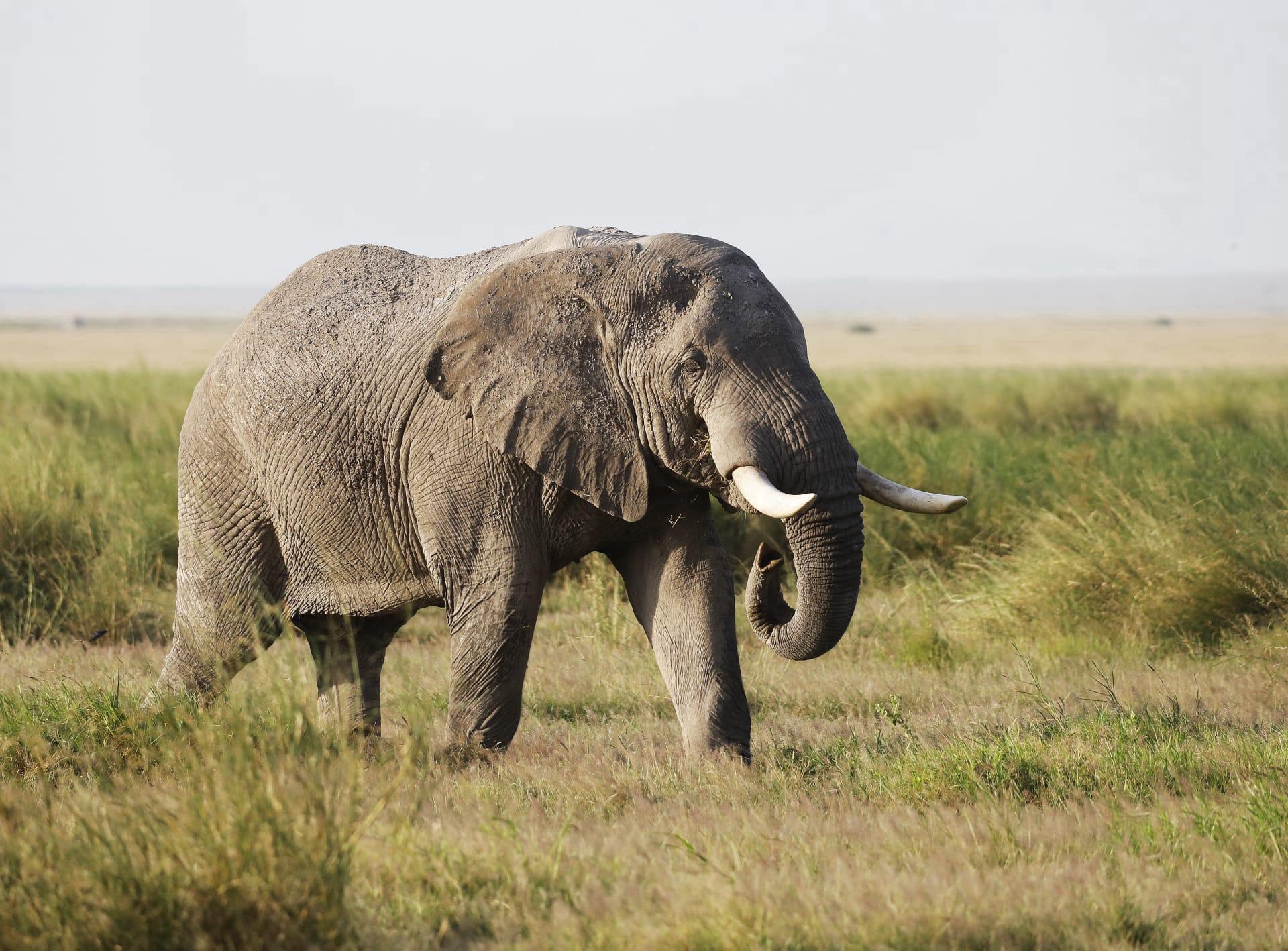1
African elephants are the largest land animals on Earth. They can weigh up to 6,800 kilograms (about 15,000 pounds) and stand up to 4 meters (around 13 feet) at the shoulder. Their massive size is a spectacle in itself, but it's their ears that really set them apart. African elephant ears can grow up to 1.5 meters (5 feet) in length and are used for body temperature regulation. The extensive network of blood vessels in their ears helps dissipate excess heat as they flap them, essential for survival in the hot African climate.
These giants also have an incredibly long pregnancy duration, the longest of any land animal. An African elephant's gestation period lasts about 22 months. That's almost two years of pregnancy! This lengthy gestation is necessary for the development of their large and complex brains, which are crucial for their survival. A newborn elephant calf can weigh as much as 120 kilograms (about 260 pounds), making it one of the heaviest babies in the animal kingdom.

2
Elephants are renowned for their memory and intelligence, and African elephants are no exception. They possess a highly developed hippocampus, a brain region responsible for emotion and spatial awareness. Studies have shown that they can remember water sources over many years and can recognize and distinguish between hundreds of different individual elephants. This memory helps them survive in the challenging environments of Africa, where remembering locations of food and water is crucial.
The tusks of an African elephant are not just for show; they're actually elongated incisors and continue to grow throughout their lives. These tusks can reach impressive lengths — sometimes over 3 meters (about 10 feet). They are used for digging for water, salt, and roots; stripping the bark from trees for food; and as a defense against predators. Unfortunately, these majestic tusks have also made them a prime target for poachers, leading to a significant decline in their population.

3
African elephants communicate in a variety of ways, but one of the most fascinating is through infrasound. These are sounds that are too low for human ears to detect. Elephants use these low-frequency sounds, which can travel over great distances, to communicate with each other, especially over the vast plains of Africa. This communication can range from signaling danger to coordinating movements with the herd.
Another intriguing aspect of African elephants is their complex social structure. They live in tight matriarchal family groups led by the oldest and often largest female in the herd. These family groups are often made up of mothers, daughters, sisters, and aunts. The matriarch's experience and knowledge are vital for the survival of the group, guiding them to water, food, and teaching the younger members of the herd essential life skills.

4
Elephants have a unique relationship with water. Not only do they need to drink at least once a day, but they also love to play in water. African elephants use their trunks, which can hold about 12 liters (3.2 gallons) of water, for drinking, bathing, and playing. They are known to spend hours splashing around in waterholes, which helps to cool them down and keep their skin in good condition.
Their diet is equally fascinating. African elephants are herbivores and consume a wide variety of plants, including grasses, leaves, bamboo, bark, and roots. They are known to eat up to 300 kilograms (660 pounds) of food per day. This massive consumption is necessary to sustain their enormous size. Interestingly, their eating habits play a crucial role in shaping the African savannah ecosystem, as their feeding patterns help to control plant growth and spread seeds across large areas.

5
African elephants have a deep emotional capacity and are known to exhibit behaviors associated with grief, learning, allomothering (where other females help to care for a calf), play, humor, compassion, cooperation, self-awareness, and memory. One of the most heart-touching behaviors observed is their respect for the dead. Elephants have been seen gently touching the skulls and tusks with their trunks and feet, and they often remain silent when encountering the bones of their kind.
African elephants play a crucial role in their ecosystem. They are considered a keystone species, meaning their presence and behaviors have a disproportionately large effect on their environment. By uprooting trees and creating clearings, they help to create a variety of habitats for other species. Their dung is not only a seed disperser but also a source of food for other animals and helps to fertilize the soil. Without elephants, the landscape and the ecological balance of their habitats would be dramatically different.